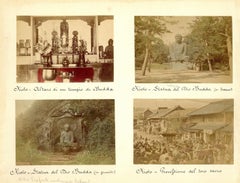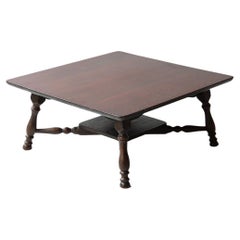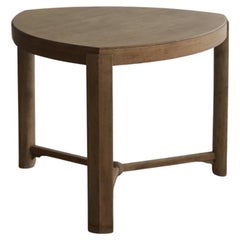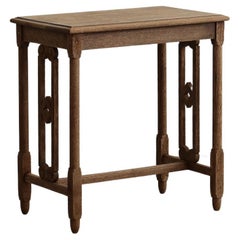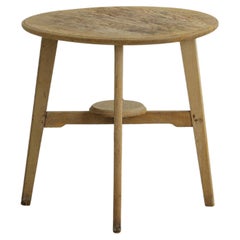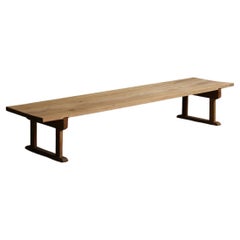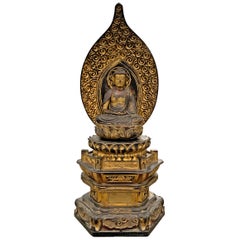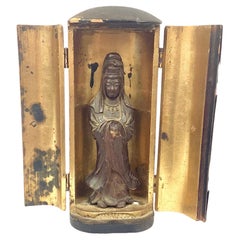Japanese Antique Shrines
1880s Japanese Antique Shrines
Photographic Paper
Early 20th Century Taisho Japanese Antique Shrines
Wood
Early 20th Century Japanese Taisho Japanese Antique Shrines
Oak
Early 20th Century Japanese Taisho Japanese Antique Shrines
Wood, Cherry
Early 20th Century Japanese Taisho Japanese Antique Shrines
Wood
Early 20th Century Meiji Japanese Antique Shrines
Wood
Early 1800s Japanese Japonisme Japanese Antique Shrines
Giltwood, Lacquer, Wood
Late 19th Century Japanese Japanese Antique Shrines
Wood, Lacquer
19th Century Japanese Japonisme Japanese Antique Shrines
Giltwood, Lacquer
18th Century Japanese Japanese Antique Shrines
Wood
Mid-19th Century Japanese Edo Japanese Antique Shrines
Wood
19th Century Japanese Japanese Antique Shrines
Paper
Mid-19th Century Japanese Edo Japanese Antique Shrines
Cedar
Early 20th Century Japanese Meiji Japanese Antique Shrines
Ceramic
Early 20th Century Japanese Taisho Japanese Antique Shrines
Stone
Mid-17th Century Japanese Edo Japanese Antique Shrines
Cedar
Early 20th Century Japanese Taisho Japanese Antique Shrines
Silk, Wood
1860s Japanese Antique Shrines
Hardwood
Early 19th Century Japanese Edo Japanese Antique Shrines
Bronze
19th Century Japanese Meiji Japanese Antique Shrines
Bronze
Late 19th Century Japanese Primitive Japanese Antique Shrines
Wood
Early 20th Century Japanese Showa Japanese Antique Shrines
Metal, Gold Leaf
19th Century Japanese Meiji Japanese Antique Shrines
Lacquer, Paint, Wood
19th Century Japanese Meiji Japanese Antique Shrines
Lacquer, Paint, Wood
19th Century Japanese Edo Japanese Antique Shrines
Wood
19th Century Japanese Edo Japanese Antique Shrines
Paper
Early 20th Century Japanese Meiji Japanese Antique Shrines
Wood, Giltwood, Lacquer, Paint
Late 19th Century Japanese Japonisme Japanese Antique Shrines
Wood
Late 19th Century Japanese Primitive Japanese Antique Shrines
Wood
19th Century Japanese Edo Japanese Antique Shrines
Wood
Early 20th Century Japanese Antique Shrines
Giltwood, Lacquer
Early 20th Century Japanese Antique Shrines
Giltwood, Lacquer
18th Century Japanese Edo Japanese Antique Shrines
Wood
Early 19th Century Japanese Edo Japanese Antique Shrines
Paint, Wood
Early 1900s Japanese Meiji Japanese Antique Shrines
Wood
Early 20th Century Japanese Antique Shrines
Silk
Late 18th Century Japanese Edo Japanese Antique Shrines
Wood, Hardwood
1870s Edo Japanese Antique Shrines
Handmade Paper, Mulberry Paper, Woodcut
19th Century Japanese Taisho Japanese Antique Shrines
Stone
19th Century Japanese Meiji Japanese Antique Shrines
Granite
19th Century Japanese Japanese Antique Shrines
Silk
Early 20th Century Japanese Japonisme Japanese Antique Shrines
Metal
Early 20th Century Japanese Taisho Japanese Antique Shrines
Stone
Early 20th Century Japanese Japanese Antique Shrines
Stone, Granite
Early 20th Century Japanese Meiji Japanese Antique Shrines
Granite
18th Century Japanese Edo Japanese Antique Shrines
Wood
Early 20th Century Japanese Taisho Japanese Antique Shrines
Stone
Early 20th Century Japanese Meiji Japanese Antique Shrines
Gold
15th Century and Earlier Japanese Other Japanese Antique Shrines
Pottery
19th Century Chinese Chinese Export Japanese Antique Shrines
Wood, Paint
1830s Japanese Anglo-Japanese Japanese Antique Shrines
Lacquer
19th Century Japanese Japanese Antique Shrines
Granite
Early 17th Century Japanese Edo Japanese Antique Shrines
Cedar
Late 19th Century Japanese Japanese Antique Shrines
Lacquer
Late 19th Century Asian Japanese Antique Shrines
Wood
19th Century Japanese Japanese Antique Shrines
Bronze
19th Century Japanese Japanese Antique Shrines
Wood
Mid-19th Century Edo Japanese Antique Shrines
Handmade Paper, Washi Paper, Pigment, Woodcut
- 1
Japanese Antique Shrines For Sale on 1stDibs
How Much are Japanese Antique Shrines?
- 1stDibs ExpertApril 5, 2022A Japanese shrine is called a jinja. In the Shinto faith, a shrine is thought to serve as the home of spirits known as kami. Find a collection of Japanese art, furniture and decorative objects from some of the world’s top makers and sellers on 1stDibs.
- 1stDibs ExpertApril 5, 2022A Japanese shrine, or Shinto shrine, will include three main areas: the main hall (honden), a worship hall (haiden) and an offering hall (heiden). Most people do not enter the shrine itself. Instead, they pray at the entrance to the hall. Find a variety of Shinto shrine pieces on 1stDibs.
- 1stDibs ExpertAugust 8, 2024To tell if your Japanese pottery is antique, look for markings, which usually appear on the bottoms of pieces. If you see the word "Nippon," your piece was likely produced between 1891 and 1921, making it an antique. Pieces marked with the words "made in occupied Japan" originated between 1945 and 1952 and are vintage, based on their age. A "made in Japan" marking may indicate a vintage or contemporary piece. If you don't see any of these markings, consult trusted online resources to get a rough idea of when your pottery was produced. Any piece that dates back 100 years or more is antique. Should you encounter difficulty with the dating process, a certified appraiser or knowledgeable antique dealer can assist you. On 1stDibs, shop a variety of Japanese pottery.
Read More
Symbols of Happiness and Rebirth Adorn This Japanese Satsuma Bowl
Decorated with white cranes and the sought-after thousand-butterflies motif, the Meiji-period vessel offers both a celebration of traditional aesthetics and a clear reflection of the era’s appetite for exquisite export pieces.
Chicago’s Pagoda Red Has a Spirited Mix of Asian Antiques and Bold New Art
For 25 years, gallerist Betsy Nathan has leveraged her keen eye and key connections to bring a unique selection of rare finds to the market.
In L.A., Gallerist JF Chen Has Long Championed Eclectic Blue-Chip Design
Now working alongside his daughter Bianca, dealer Joel Chen has presented a most covetable array of antiques, art and contemporary creations for more than 40 years.
12 Calming Spaces Inspired by Japanese Design
From cherry-blossom-adorned walls paired with glamorous lighting to wood-paneled ceilings above checkerboard-patterned chairs, these 12 spaces seamlessly blend Eastern and Western aesthetics.
Rodrigo Rivero Lake’s Mexico City Showroom Is a Museum-Worthy Trove of Spanish Colonial and Asian Antiques
The dealer and curator has spent the past 50 years amassing a collection of exceptional art, furniture and architectural elements that trace the cultural influence of the Spanish empire from Europe to the Americas and beyond.
16 Refined Asian-Inspired Interiors
These spaces exemplify how Eastern elements elevate a home's decor.
